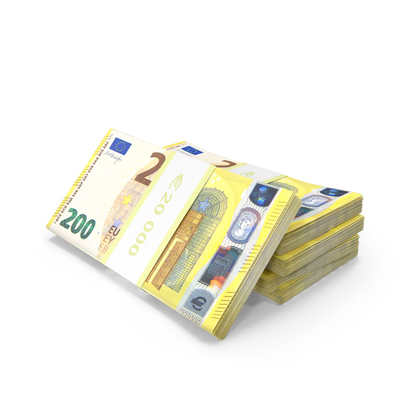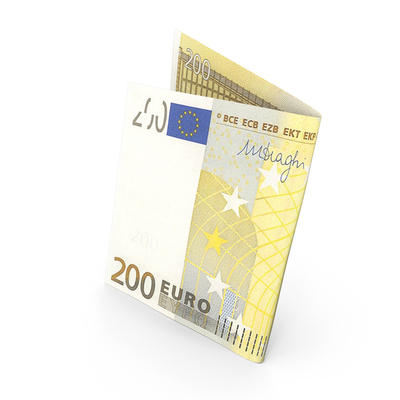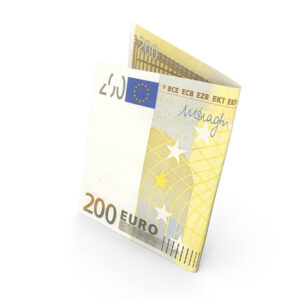Introduction .
The 200 Euros is a significant denomination in the euro currency system, symbolizing the value and stability of the European economy. In this blog post, we will delve into the design, security features, and historical significance of the 200 euro bill. By understanding the key elements of this banknote for sale, we can appreciate its importance in financial transactions and its contribution to the cultural and economic fabric of Europe.
Design of the 200 Euros.
The 200 euro bill boasts an intricate design that reflects the rich cultural heritage of Europe. Its dimensions are 153mm x 82mm, making it one of the larger denominations in the euro currency. The dominant colors are yellow and brown, with a theme centered around architectural styles from the Baroque and Rococo periods.
The front of the 200 euro bill features a portrait of a European architectural motif, depicting windows and gates. This design represents openness and cooperation among European nations. Additionally, the bill showcases an impressive hologram strip, which changes color when tilted, adding an extra layer of security.
On the reverse side, the bill showcases an artistic representation of a bridge, symbolizing connectivity and collaboration. The design elements, including the intricate patterns and raised ink, make the 200 euro bill both visually appealing and difficult to counterfeit.
Security Features of the 200 Euro Bill .
The European Central Bank (ECB) has implemented several advanced security features on the 200 euro bill to ensure its authenticity and protect it from counterfeiters. These features include:
a) Holograms and Watermarks: The holograms on the bill display shifting images and colors when tilted, making them difficult to reproduce. Watermarks featuring the denomination and an architectural motif are embedded in the paper and are visible when held up to light.
b) Security Thread: A thin, embedded security thread runs vertically through the bill. When held up to the light, it reveals the euro symbol and the denomination.
c) Raised Printing and Microprinting: Certain parts of the bill, such as the initials of the European Central Bank in microprinting, have raised ink that can be felt by touch. Microprinting is used for intricate patterns and text that is difficult to replicate accurately.
d) UV and Infrared Features: Under ultraviolet light, the bill displays fluorescent ink patterns, while infrared ink is visible under infrared light. These features are not easily replicated by counterfeiters.
Historical Significance and Usage .
The introduction of the 200 euro bill in 2002 marked an important milestone in the history of the euro currency. As one of the highest denominations, it facilitates large financial transactions within the European Union and plays a crucial role in international trade.
The bill serves as a symbol of the European Union’s commitment to economic integration and financial stability. It allows for the seamless exchange of goods and services across borders, fostering economic growth and cooperation among member countries.
Certainly! Here are a few frequently asked questions (FAQs) about the 200 euro bill along with their corresponding answers:
FAQ: Is the 200 euro bill the highest denomination in the euro currency system?
Answer: No, the 200 euro bill is not the highest denomination. The euro currency system includes higher denominations such as the 500 euro bill, which is the highest. However, the 500 euro bill is less commonly used in everyday transactions.
FAQ: Are there any special precautions I should take when accepting or handling a 200 euro bill?
Answer: Yes, it’s important to familiarize yourself with the security features of the 200 euro bill to detect counterfeit notes. Check for elements such as holograms, watermarks, security threads, and raised printing. Additionally, consider using a counterfeit detection pen or ultraviolet light to verify authenticity.
FAQ: Can I use the 200 euro bill in all European Union countries?
Answer: Yes, the 200 euro bill is accepted as legal tender in all eurozone countries. It can be used for transactions within any of the 19 European Union member states that have adopted the euro as their official currency.
FAQ: What should I do if I receive a suspicious or counterfeit 200 euro bill?
Answer: If you suspect that a 200 euro bill is counterfeit, do not accept it and notify the authorities immediately. In most cases, banks and law enforcement agencies have protocols in place to handle counterfeit currency incidents.
FAQ: Are there any limitations on the use of the 200 euro bill?
Answer: While there are no specific limitations on using the 200 euro bill, it’s important to note that some merchants may not have sufficient change for such a high denomination. It’s always advisable to carry smaller denominations or check with the establishment beforehand.
Despite its significance, the 200 euro bill has also faced criticism and concerns related to its potential use in illegal activities such as money laundering and illicit transactions. In response, authorities have implemented strict regulations and enhanced monitoring to prevent misuse.
Conclusion
In conclusion, the 200 euro bill for sale is an important component of the euro currency system. Its design showcases Europe’s architectural heritage, while its advanced security features ensure its integrity and authenticity. Understanding the historical significance and usage of this banknote provides insights into the European Union’s commitment to economic stability and cooperation.












